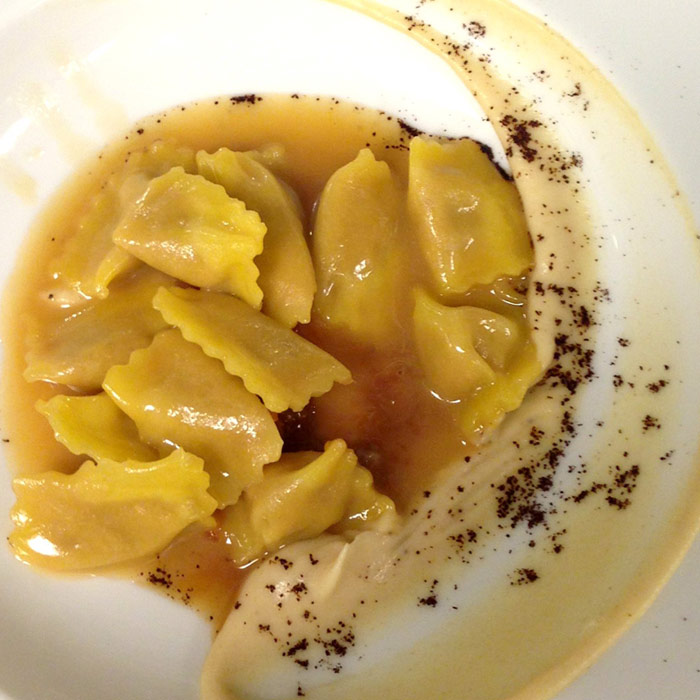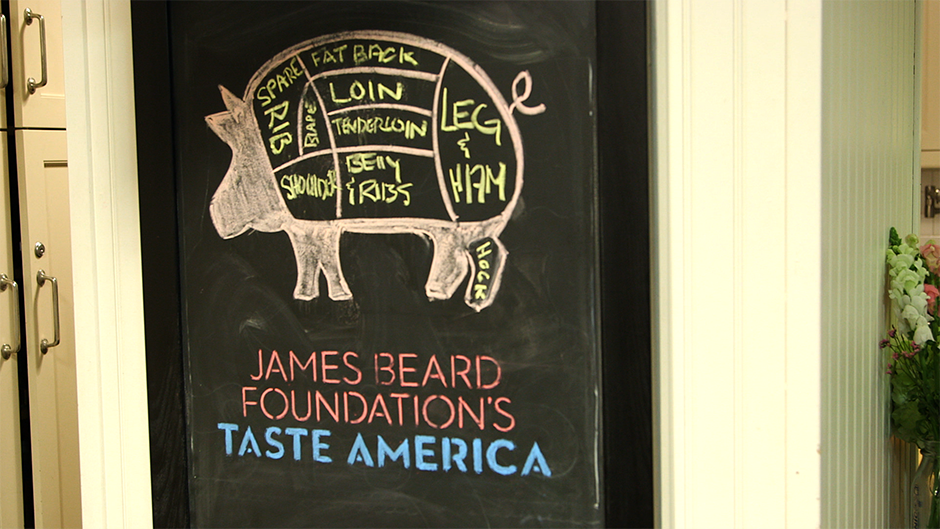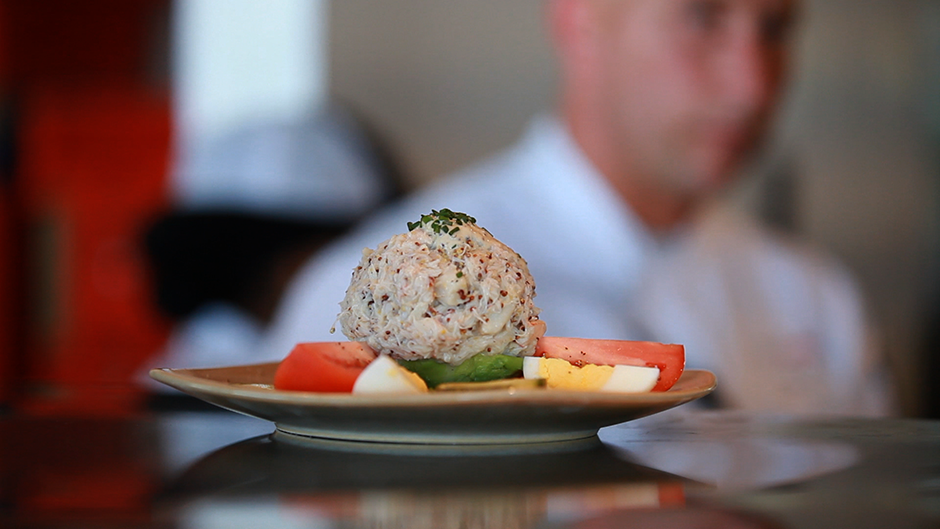Unless you’ve been living under a rock (or a 50-pound bag of flour), you’ve probably noticed that more people are passing up generic baked goods in favor of millet flour muffins, buckwheat biscuits, and other edible emblems of the new wheat-free lifestyle. And the food industry is starting to pay attention.
“20 percent of the country now eats gluten-free — and not necessarily because they have a diagnosis,” says Miki Agrawal, founder of the gluten-free pizzeria, Wild. “That’s a huge market.”
But despite concept restaurants popping up in big cities, and the reported $10 billion spent at the grocery store last year on gluten-free products, fine dining still remains the final frontier for gluten-free eaters, with many lauded chefs unwilling to deviate from their vision or compromise the fundamentals of their cuisine by eliminating or finding alternatives to traditional wheat-based staples.
So when big-name chefs like Mark Ladner of Del Posto in New York and Barbara Lynch, whose Boston restaurant empire totals nine outposts, start making their kitchens allergy-friendly, even developing their own gluten-free pastas and breads, it’s a serous sign of goodwill to the wheat-free set.
Due to pressure from customers, for the past two years Del Posto has adopted a more loosey-goosey approach to their tasting menus, with a willingness to modify and substitute dishes in order to meet the needs of their guests.
“This is not a place that foodies really come to,” says Ladner, who opened the restaurant in the fall of 2005 as the upscale Italian-American crown jewel of Mario Batali and Joe Bastianich’s restaurant group. “We can’t really be a boutique, edgy restaurant. So we try to spend our energy on more productive things, like giving people what they want.”
Ladner displays the easy calm of any commander in chief of a very well-oiled machine. On a busy night during the holiday season, Del Posto can have over 200 employees between the front and back of the house; and 5 to 6 different chefs can prepare the same dish on a given week.
Taking on the level of flexibility with customers that Ladner has accepted is a huge educational and logistical undertaking. “We don’t change the food very often because of the massive resource it takes,” says Ladner. “We try to mitigate the variable for error wherever we can.”
In the daily staff meeting, where little things (like the mating habits of stone crabs) get equal airtime as bigger agenda items (like the fish of the day), I learned that slight changes to the menu are discussed and practiced over the course of months before the customer ever experiences them.
Though they’ve stocked store-bought dried pastas since customers started requesting wheat-free options a little over a year ago, Ladner and his team began playing around with different gluten-free flours to create handmade counterparts to their regular offerings. “Once we started making our own fresh pastas, everything was seamless. Then when the food arrived at the table, the pasta all looked the same.”
But getting the fresh pasta to the point of service was another matter altogether. “When we first started, we thought rice or potato flour wouldn’t work well, and that beans would be better. But we were so wrong,” says Ladner, who went through three months’ worth of failed batches until he happened upon Thomas Keller’s signature blend Cup4Cup. “We thought, ‘We’ll never come up with a mixture better than this.’”
Of all the world’s cuisines, Italian probably presents the largest wheat-laden minefield for gluten-free eaters. And for a chef, toying with Italian ingredients is equally dangerous.
“It’s always been important to us to make food that’s soulfully Italian. Food that your grandmother might have made, assuming she was a good cook,” says Ladner.
But in the old country, the addition of onions to a marinara sauce is a punishable taboo, not unlike slathering ketchup on a premium dry-aged rib eye at an upscale American steakhouse.
To that grandmother, or Nonna, could pasta without the wheat even be considered pasta at all?
“Deconstructing the food to deal with dietary restrictions and then putting it back together is a very delicate task,” says Ladner, who came up in the kitchen at Babbo and helped open Batali and Bastianich’s following two Italian restaurants.
One of the more successful gluten-free experiments was the recreation of the restaurant’s signature focaccia. The dish was passed along to Ladner’s chef de cuisine Matt Abdoo, who had begun tinkering with gluten-free baking eight years ago.
“Back then, there were no options out there,” said Abdoo, who was dating a girl with celiac disease at the time. “Bob’s Red Mill was one of the only brands, and their mix was just called ‘gluten-free flour’ — no AP, no baking — and you could only find it at the health food store or by ordering it online.”
Despite past efforts, it took Abdoo until his Del Posto days to discover the right combination of flours and his secret ingredient to perfect focaccia — mayonnaise! “Cup4Cup is primarily white rice flour, so alone, the bread turned out the color of the tablecloth. But Bob’s has a lot of chickpea flour in it, so the flavor is overpowering.” By mixing the two together, along with mascarpone, powdered milk, and the mayonnaise, Abidou created a focaccia that has the complexion of the original, with a subtle balanced flavor, and a light, airy texture. And texture is the common pitfall of all crumbly, dense, gluten-free baked goods.
Ladner views his ability to provide gluten-free alternatives to all the dishes on the Del Posto menu, and even those given away for free, like the focaccia, as a serious competitive advantage. “Not a lot of places have the facilities and the support mechanisms to do this sort of thing. It’s super disruptive unless you engineer the process.”
There are at least eight different shapes of fresh pasta on Del Posto’s a la carte menu. With the gluten-free alternatives, which get made at the beginning of the day before the pasta area has been contaminated with generic flour, that means the prep staff is responsible for batching 16 different varieties.
Despite the massive amounts of labor taking place there, the kitchen of Del Posto is devoid of the fragile, frenetic energy that you usually find in the back-of-house right before service. So much so that Chef Matt happily stepped away from his post as second in command to walk me through the massive two-floor workspace. And in a matter of minutes, a line cook fired off 5 different gluten-free pasta dishes for me to sample. (They were delicious, in case you had any doubt.)
Most restaurants simply don’t have the luxury of physical resources to cater to the gluten-free customer. Cross-contamination could cause a life-threatening reaction for those with serious allergies like celiac disease. And what chef wants that kind of blood, by way of flour, on their hands?
In addition to the space issue, premade gluten-free flour blends, like Cup4Cup, can cost as much as $8 a pound, more than 10 times what a chef would pay for generic flour. If you’re a restaurant committed to serving the gluten-free customer at a lower price point, the only option is to successfully develop your own blends.
For Agrawal, whose gluten-free pizza concept now has locations in both New York and Las Vegas, the process of developing a crust that could stand up to regular pies took years of experimenting. “A lot of people get stuck in not having the absolute perfect product before it hits the market,” says Agrawal, who has several non-food-related businesses under her belt. “You want to get to the point where it can be enjoyed by the public and then iterate from there. And that’s how it was with my pizza.”
Before opening her first outpost on the Upper East Side in 2005 (then called Slice), Agrawal had no experience with gluten-free flours — in fact, she had never opened a restaurant and didn’t even cook. “If you have an idea, you don’t necessarily have to have the skill set to execute it. You just get the right people to believe in you and help you get there,” says Agrawal, who hired a head chef to work alongside her in developing the gluten-free recipes.
One chef who sought help in the kitchen, despite some experience working with gluten-free flours, was Chef Barbara Lynch.
Lynch started noticing the rise in gluten-free requests at her Italian flagship restaurant No. 9 Park about five years ago. After doing research on celiac disease and the taxing effect of wheat on the body, she not only decided to develop new pasta options for all her restaurants, but she also went gluten-free herself.
When it came to perfecting the recipes, she turned to the experts at Harvard’s food program. “I gave them five of my ideas and challenged them to make the pasta better,” says Lynch. “These cute little scientists — most of whom didn’t know the first thing about cooking — went back to their dorm rooms and measured all the different flours and ingredients based on elasticity, using little scales. What they came back with was amazing.”
For both chefs, experimentation with gluten-free cooking was a gateway into exploring a cleaner way of eating and cooking. By embracing the challenges of the creative process, they continue to let new discoveries trickle down to the diners at their restaurants. Ladner is hard at work on a completely macrobiotic vegan tasting menu for Del Posto. There’s even talk of a fermentation room to play with producing his own sprouted wheat, in addition to the usual pickles and kraut.
“It’s totally fun,” says Ladner of his new projects. “I spent a lot of time rejecting and being upset about peoples preferences. But once we decided the best thing to do was to embrace them, it’s been kind of liberating.”
The ability to accommodate dietary restrictions has become a big point of pride for Ladner, especially for the gluten-free folk. “The more I’ve read about it, I’ve learned that a lot of people who are gluten intolerant are people who overate gluten. They started as enthusiasts — from a place of love — and that makes me want to take care for them even more.”






